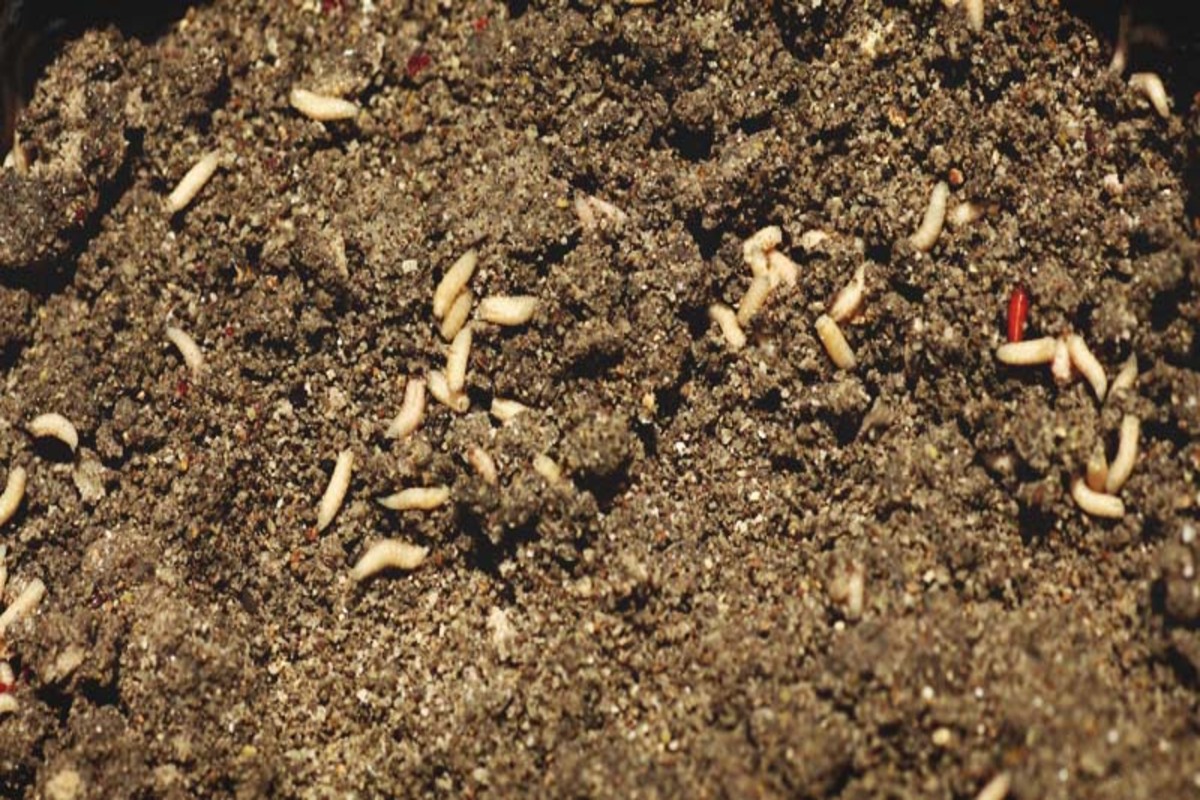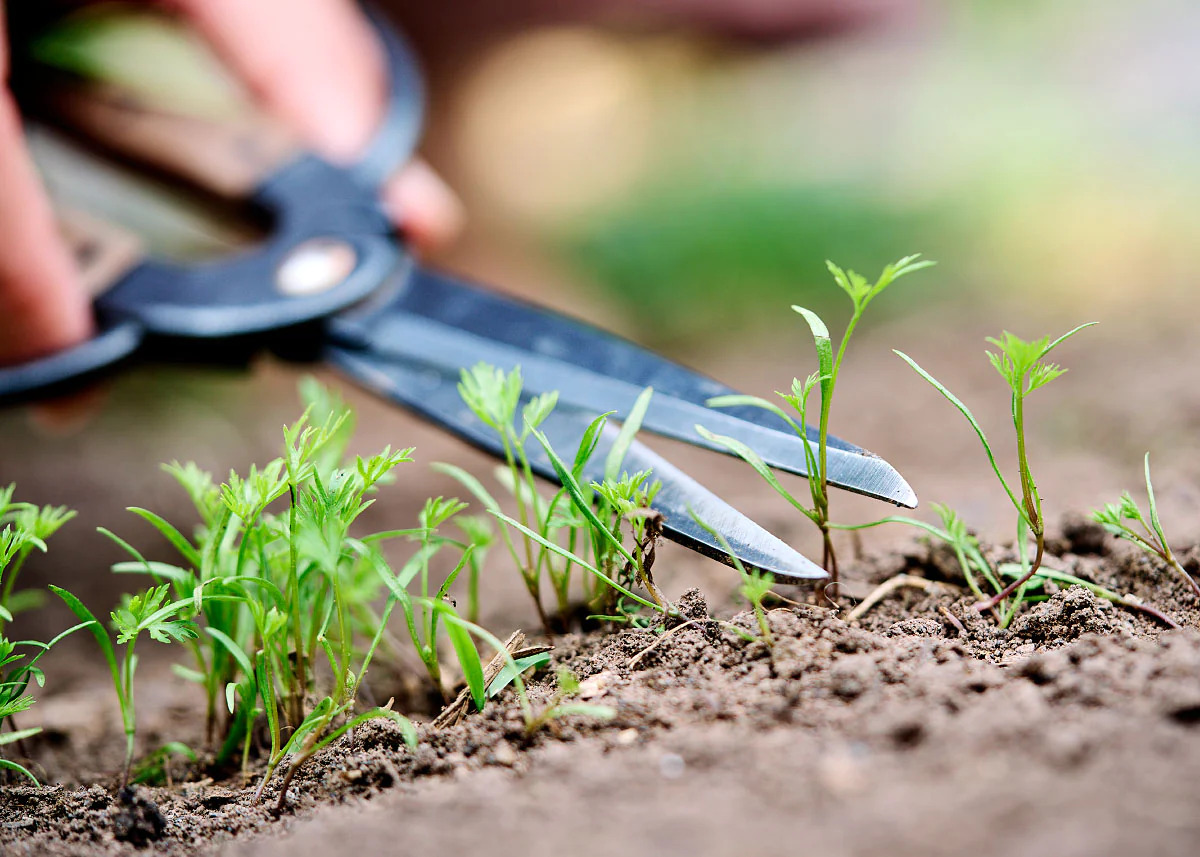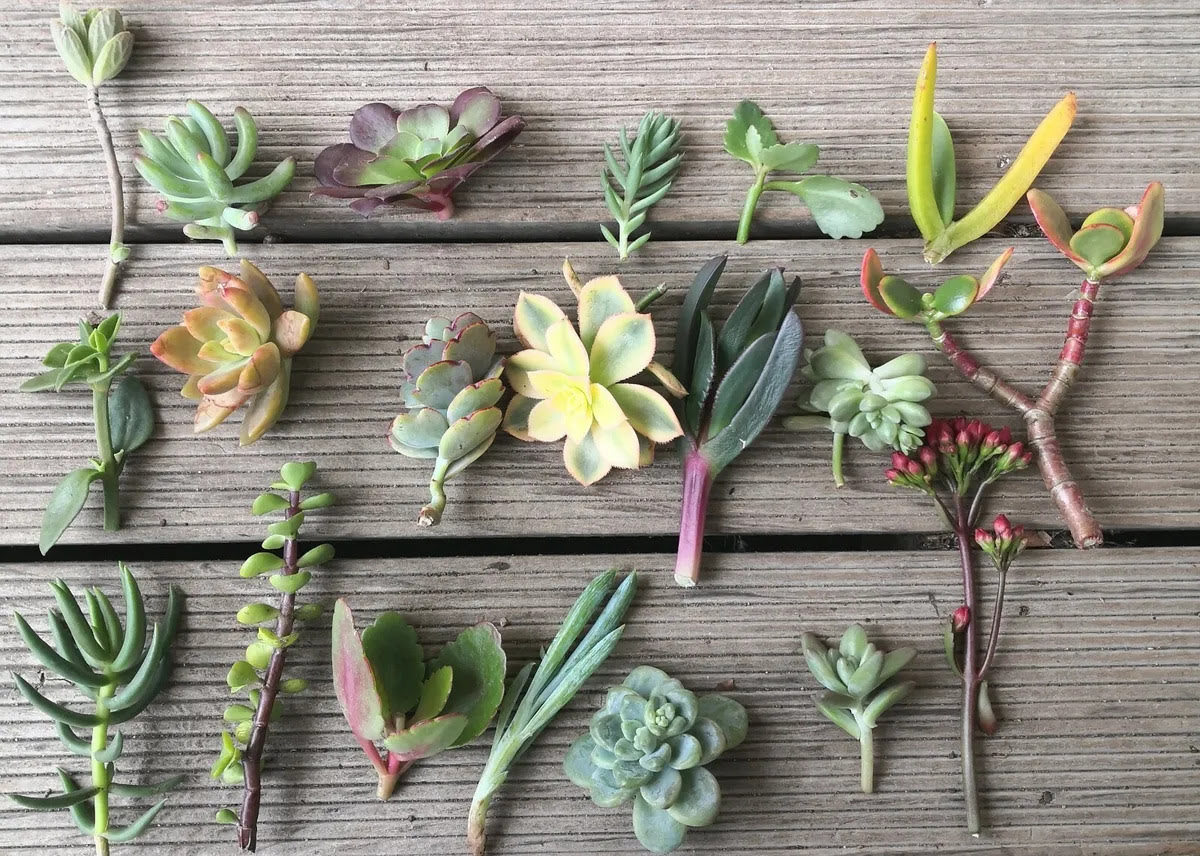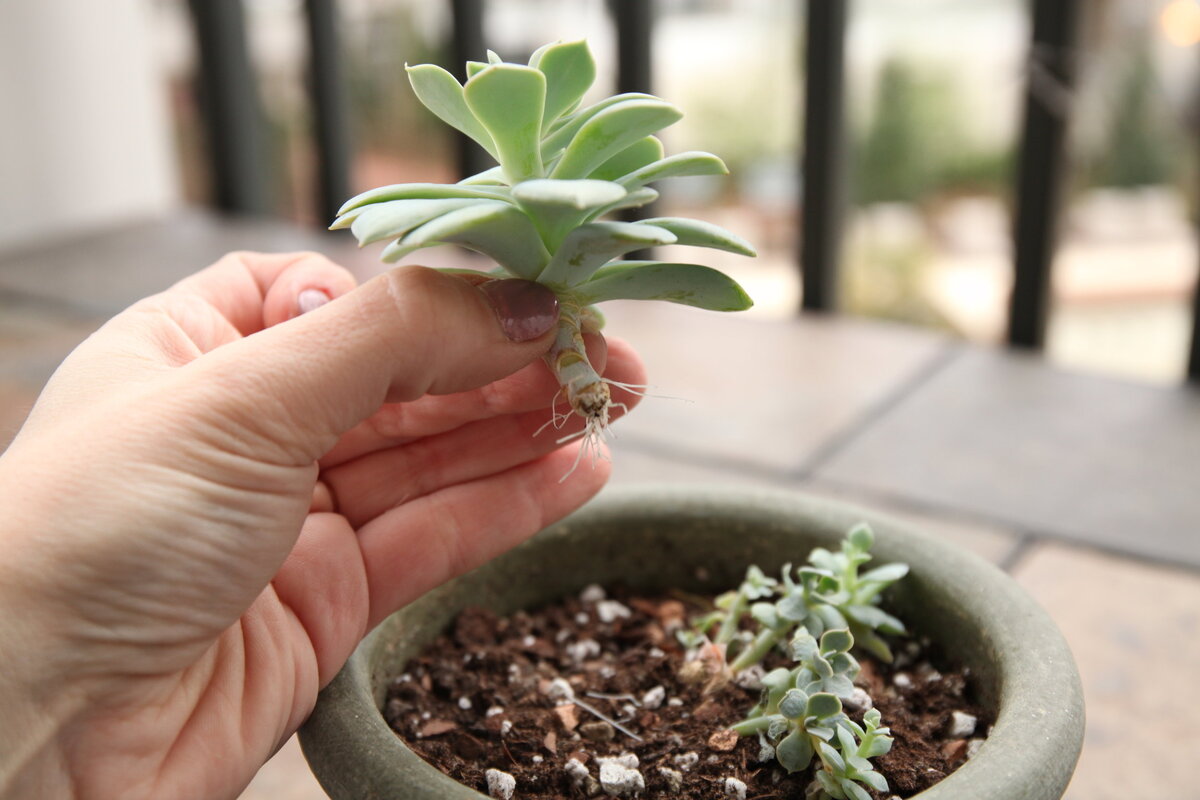Home>Gardening Tips and Tricks>How To Keep Maggots Out Of Compost


Gardening Tips and Tricks
How To Keep Maggots Out Of Compost
Modified: January 22, 2024
Learn effective problem solving techniques to keep maggots out of your compost pile. Discover tips and tricks to maintain a clean and odor-free composting process.
(Many of the links in this article redirect to a specific reviewed product. Your purchase of these products through affiliate links helps to generate commission for Chicagolandgardening.com, at no extra cost. Learn more)
Table of Contents
Introduction
Welcome to the world of composting, where organic waste transforms into nutrient-rich soil for your garden. Composting is an eco-friendly practice that reduces landfill waste and helps create a sustainable environment. However, one of the challenges that composters face is the presence of maggots in their compost piles. Maggots can be unsightly and unpleasant, leading many composters to seek ways to keep them out of their compost.
In this article, we will explore the reasons why maggots are commonly found in compost and provide you with effective techniques to prevent their infestation. By following these tips, you can maintain a clean and healthy compost pile, free from the presence of maggots.
Before we delve into the practical solutions, let’s first understand why maggots appear in compost in the first place. Maggots are the larvae of flies, and they thrive in moist and decaying organic matter. When flies lay eggs on your compost pile, these eggs hatch into maggots that feed on the decomposing materials.
Although maggots in compost are not harmful to humans, they can be undesirable for several reasons. First and foremost, they can be aesthetically unpleasant, causing discomfort for those tending to the compost pile. Additionally, maggots can lead to unpleasant odors and attract other unwanted pests, such as rodents or raccoons, to your compost area. Therefore, it is essential to implement strategies to keep maggots out of your compost pile.
Now that we understand the importance of keeping maggots away from compost, let’s explore some effective techniques and practices that will help you maintain a maggot-free compost pile. By following these guidelines, you can ensure that your composting process is efficient, odor-free, and visually appealing.
Understanding Maggots in Compost
Before we dive into preventing maggots in your compost, it’s important to have a basic understanding of why they appear in the first place. Maggots are the larval stage of flies, and they are commonly found in compost that is moist, rich in organic matter, and in the process of decomposition.
Flies are attracted to decomposing organic matter because they lay their eggs in areas where their larvae can find a plentiful food source. When flies discover a compost pile that meets their requirements, they will lay their eggs on the surface of the compost or even burrow into it. These eggs then hatch into small, white maggots that feed on the decaying material.
Maggots are highly efficient at breaking down organic matter, acting as decomposers that accelerate the composting process. However, their presence can be a nuisance, causing concerns for composters who want to maintain a clean and visually appealing compost pile.
It’s important to note that maggots are not inherently harmful and do not pose health risks to humans. In fact, they are an integral part of the natural decomposition cycle. However, many composters prefer to keep their compost pile maggot-free for aesthetic reasons and to minimize the potential attraction of other pests, such as rodents or raccoons.
Understanding why maggots appear in compost is the first step in preventing their infestation. By addressing the factors that attract flies and create an optimal environment for maggots, you can effectively keep them out of your compost pile. In the following sections, we will explore various techniques and best practices to achieve this goal.
Reasons for Keeping Maggots Out
There are several reasons why composters prefer to keep maggots out of their compost piles. Although maggots themselves are not harmful, their presence can lead to some unwanted consequences and challenges in maintaining a healthy composting process.
First and foremost, the appearance of maggots in compost can be off-putting and aesthetically unappealing. Many composters take pride in their compost piles and want them to be visually pleasing. Maggots are often associated with decay and can give the impression that the compost pile is unsanitary or poorly managed.
In addition to the visual aspect, maggots can lead to unpleasant odors in the compost pile. They thrive in moist and decaying organic matter, and their feeding activity can release foul-smelling gases. This odor may not only be unpleasant for composters but may also cause discomfort for those working in close proximity to the compost pile.
Maggots can also attract other pests to the compost area. Flies, rodents, and raccoons are known to be attracted to compost piles that contain maggots. These pests can disrupt the composting process by digging into the pile or scattering the compost materials around. Furthermore, the presence of pests can create a nuisance and potential health risks if they come into contact with food or living areas nearby.
By keeping maggots out of your compost pile, you can maintain a cleaner and more pleasant environment. This not only enhances the visual appeal but also minimizes the potential attraction of unwanted pests. Additionally, a maggot-free compost pile is less likely to produce unpleasant odors, creating a more enjoyable composting experience for you and your neighbors.
Now that we understand the reasons for keeping maggots out of your compost, let’s explore the proper techniques and strategies to achieve a maggot-free composting process.
Proper Composting Techniques
When it comes to keeping maggots out of your compost pile, employing proper composting techniques is key. By following these techniques, you can create an environment that is less attractive to flies and maggots, resulting in a clean and thriving compost pile.
One of the fundamental principles of proper composting is maintaining the right balance of green and brown materials. Green materials, such as kitchen scraps and fresh grass clippings, provide nitrogen, while brown materials, like dry leaves and wood chips, supply carbon. By having the right ratio of these materials, typically around a 3:1 or 4:1 ratio of brown to green, you create an environment that supports the beneficial microorganisms responsible for breaking down organic matter. This balanced environment is less appealing to flies, reducing the likelihood of maggots infesting your compost pile.
In addition to the right balance of green and brown materials, proper aeration is crucial. Turning your compost regularly allows for oxygen to reach the microorganisms and helps to break down the organic matter efficiently. This process also dries out the compost slightly, making it less attractive to flies. Aim to turn your compost every few weeks with a pitchfork or compost aerator to maintain proper aeration and discourage maggot infestation.
Another important technique is to avoid adding meat, dairy products, and fats to your compost pile. These materials not only attract flies but can also create an environment that is more conducive to maggot infestation. Instead, focus on adding fruit and vegetable scraps, coffee grounds, eggshells, and yard waste. By excluding meat and dairy products, you eliminate a potential food source for flies and maggots.
Keeping your compost pile covered is another effective technique. Use a layer of straw or a compost cover to prevent flies from accessing the compost and laying eggs. This physical barrier helps keep the compost pile undisturbed, reducing the chances of maggots appearing. Remember to also cover any kitchen scraps with a layer of brown materials to further discourage flies from being attracted to the compost pile.
By implementing these proper composting techniques, you create an environment that is less attractive to flies and maggots. Maintaining a balanced mixture of green and brown materials, regularly turning the compost, avoiding meat and dairy products, and covering the compost pile are all essential steps to keep maggots out of your compost.
Now that we’ve covered the proper composting techniques, let’s move on to maintaining the optimal environment for a maggot-free compost pile.
Maintaining the Optimal Environment
Creating and maintaining the optimal environment for your compost pile is crucial in preventing maggot infestations. By ensuring the right conditions, you can discourage flies from laying eggs in your compost and minimize the presence of maggots. Here are some tips for maintaining the optimal environment:
Keep your compost pile moist, but not too wet. Proper moisture levels are essential for the decomposition process. Aim for a moisture level similar to that of a damp sponge. If your compost pile becomes too dry, sprinkle it with water. On the other hand, if it becomes too wet and starts to smell, add dry materials, such as straw or shredded leaves, to absorb excess moisture. Maintaining the right moisture balance discourages flies and maggots from settling in your compost pile.
Ensure good airflow in your compost pile. Oxygen is necessary for the beneficial microorganisms that break down organic matter. Promote aeration by layering your compost pile with twigs or small branches, which create air channels. Avoid compressing the materials too tightly, as this restricts airflow. Regularly turning the compost also helps to introduce oxygen and maintain a healthy decomposition process.
Control the temperature of your compost pile. The decomposition process generates heat, which can be beneficial in killing fly eggs and larvae. Aim for a temperature range of 120 to 160 degrees Fahrenheit (49 to 71 degrees Celsius) in the compost pile. This temperature is achieved by maintaining a proper balance of green and brown materials, turning the pile regularly, and ensuring adequate moisture. A higher temperature not only helps control maggots but also speeds up the decomposition process.
Avoid using chemicals in your compost pile. Chemical additives, such as pesticides or herbicides, can disrupt the natural balance of microorganisms in your compost. These chemicals can harm the beneficial insects and organisms that play a vital role in the decomposition process. Instead, focus on using organic materials and natural methods to deter pests and maintain a healthy composting environment.
By maintaining the optimal environment for your compost pile, you create conditions that discourage flies and maggots from infesting the compost. Proper moisture levels, good airflow, controlled temperature, and avoiding chemical additives all contribute to a healthy and maggot-free composting environment.
Now that we’ve discussed maintaining the optimal environment, let’s move on to covering the compost pile as an effective method in keeping maggots out.
Covering the Compost
One effective method to keep maggots out of your compost is by covering it. By placing a cover over your compost pile, you create a physical barrier that prevents flies from accessing the organic matter and laying their eggs. This simple yet effective technique can significantly reduce the chances of maggot infestation.
When choosing a cover for your compost pile, there are a few options to consider. A layer of straw or dried leaves works well as a natural cover. These materials provide some insulation, while still allowing airflow to the compost. Additionally, they are readily available, inexpensive, and easy to apply and remove.
If you prefer a more structured cover, consider using a compost bin or tarp. Compost bins come in various sizes and styles, from open-bottomed wire mesh bins to enclosed plastic containers. These bins provide a contained space for your compost pile and offer protection from flies and other pests. If you opt for a tarp, make sure it is securely fastened to the compost pile to prevent it from blowing away and exposing the compost.
When covering your compost pile, it’s important to leave some openings for airflow. This allows oxygen to reach the microorganisms responsible for decomposition. You can achieve this by lifting one side of the cover or leaving gaps between the cover and the compost pile. Balancing coverage and airflow is key to maintaining a healthy composting environment.
Another advantage of covering your compost pile is that it helps regulate moisture levels. A cover helps retain moisture, preventing the compost from becoming too dry. It also prevents excessive moisture accumulation during rainy periods, avoiding a waterlogged compost pile. Maintaining proper moisture levels is important in deterring maggots and promoting a healthy decomposition process.
Remember to monitor the moisture levels and temperature regularly, especially if you are using a cover. Adjust the cover or add dry materials as needed to maintain optimal conditions for composting.
By covering your compost pile, you protect it from flies and create a less inviting environment for maggots. This simple step can make a significant difference in preventing maggot infestations and maintaining a clean and visually appealing compost pile.
Now that we’ve covered the importance of covering the compost pile, let’s move on to balancing green and brown materials as a preventive measure against maggots.
Balancing Green and Brown Materials
Achieving the right balance of green and brown materials is essential in keeping maggots out of your compost. Green materials, such as kitchen scraps and fresh grass clippings, are rich in nitrogen. Brown materials, like dry leaves and wood chips, provide carbon. By properly balancing these materials, you create an environment that is less attractive to flies and maggots.
Typically, a compost pile should have a ratio of about three parts brown materials to one part green materials. This ratio ensures that there is enough carbon for the decomposition process while supplying the necessary nitrogen for the microorganisms responsible for breaking down the organic matter.
When adding green materials, be mindful of their moisture content. Kitchen scraps and fresh grass clippings can be high in moisture, which can create a favorable environment for maggots. To prevent excess moisture, layer the green materials with dry brown materials like leaves or shredded paper. This helps to absorb moisture and maintain a balanced composting environment.
It’s important to note that larger amounts of green materials can generate more heat in the compost pile. This heat can deter flies and reduce the likelihood of maggot infestation. Therefore, during times when maggots are a concern, such as in warmer seasons, it is beneficial to add more green materials to increase the temperature in the pile.
Remember to properly mix the green and brown materials to ensure an even distribution throughout the compost pile. This helps to create uniform conditions for decomposition and minimizes the likelihood of localized areas that may attract flies and maggots.
Regularly monitor the moisture levels and temperature of your compost pile to ensure optimal conditions. Adjust the balance of green and brown materials as needed to maintain the desired ratio and to discourage the presence of maggots.
By achieving the proper balance of green and brown materials, you create a composting environment that is less attractive to flies and maggots. Balancing these materials promotes a healthy decomposition process and helps to maintain a maggot-free compost pile.
Now that we’ve discussed the importance of balancing green and brown materials, let’s move on to the topic of avoiding meat and dairy products in your compost pile.
Avoiding Meat and Dairy Products
When it comes to composting, it’s important to be mindful of the materials you add to your compost pile. One key practice to keep maggots out of your compost is to avoid adding meat and dairy products. These types of materials can attract flies and create an environment that is favorable for maggot infestation.
Meat and dairy products are prone to decomposition and can produce strong odors as they break down. These odors act as a lure for flies, which are attracted to the scent of decaying organic matter. By excluding meat and dairy, you eliminate a significant food source for flies and reduce the likelihood of maggots appearing in your compost pile.
Instead of adding meat and dairy, focus on incorporating vegetable and plant-based materials into your compost. Fruit and vegetable scraps, coffee grounds, tea leaves, and yard waste are excellent alternatives. These plant-based materials contribute to the nutrient content of your compost while minimizing the risk of attracting flies.
If you have a large amount of meat or dairy waste that you want to compost, consider using a separate composting system specifically designed for such materials, known as a “hot composting” system. Hot composting involves maintaining higher temperatures, typically between 140 to 160 degrees Fahrenheit (60 to 71 degrees Celsius), which can help to break down meat and dairy more efficiently and discourage maggot infestation.
It’s worth mentioning that some composters choose to exclude all animal products from their compost piles, including eggs and dairy products. This approach can reduce the risk of attracting pests and may be particularly beneficial for those in urban settings or areas with a high population of wildlife.
By avoiding the addition of meat and dairy products to your compost, you create a less appealing environment for flies, reducing the chances of maggot infestation. Focusing on plant-based materials helps to maintain a clean and healthy compost pile while still providing the necessary nutrients for optimal decomposition.
Now that we’ve explored the importance of avoiding meat and dairy products, let’s move on to the practice of regularly turning the compost pile as a preventive measure against maggots.
Regularly Turning the Compost
Regularly turning your compost pile is a vital practice to prevent maggot infestation and maintain a healthy and productive composting process. Turning the compost helps to introduce oxygen, distribute moisture evenly, and disrupt the environment that maggots find favorable.
Turning the compost involves using a pitchfork or a compost aerator to mix and shift the materials in your compost pile. This process promotes aeration, which is crucial for the beneficial microorganisms responsible for the decomposition process. These microorganisms require oxygen to thrive and effectively break down organic matter.
When you turn the compost, you expose the lower layers of the pile to air and break up any compacted areas. This helps to prevent pockets of moisture from forming, which can attract flies and lead to maggot infestation. Regular turning also distributes moisture more evenly throughout the compost pile, ensuring a balanced moisture level that is less attractive to pests.
In addition to improving airflow and moisture distribution, turning the compost can help control the temperature. As the materials in the pile decompose, heat is generated. Regularly turning the pile allows for uniform heating and helps to break down materials more efficiently. The higher temperatures reached during this process can discourage the presence of maggots and other unwanted pests.
Frequency of turning the compost can vary depending on various factors, such as the size of your compost pile, the materials used, and the temperature. As a general guideline, aim to turn your compost pile every two to three weeks. However, feel free to adjust the frequency based on the conditions and the progress of the decomposition process.
When turning your compost, pay attention to the outer edges and the center of the pile, as these areas tend to heat up more slowly. Mix the materials thoroughly to ensure that all parts of the compost pile are exposed to oxygen and receive the benefits of turning.
Turning the compost is an essential practice to maintain a healthy composting process and prevent maggot infestation. By promoting aeration, moisture distribution, and temperature control, regular turning creates an environment that is less favorable to flies and maggots.
Now that we’ve covered the benefits of turning the compost pile, let’s explore the use of beneficial nematodes as another preventive measure against maggots.
Using Beneficial Nematodes
Beneficial nematodes are microscopic organisms that can be used as a natural and effective method to control maggot infestations in your compost pile. These tiny roundworms are non-pathogenic and prey on the larvae of flies, including maggots. Introducing beneficial nematodes to your compost can help reduce fly populations and prevent maggot infestations.
Beneficial nematodes can be purchased from garden centers or online suppliers. They come in a dormant state and need to be activated before application. Follow the instructions provided by the supplier for the proper rehydration process. Once activated, the nematodes can be applied to the compost pile using a sprayer or watering can.
It’s important to apply the nematodes during the appropriate time, typically in the early morning or late evening when temperatures are cooler. This ensures better survival and effectiveness of the nematodes. Dilute the nematodes in water according to the instructions, and apply the solution evenly over the compost pile, covering all the areas where maggots may be present.
Beneficial nematodes work by seeking out and infecting fly larvae, including maggots, with bacteria. The bacteria then multiply within the larvae, ultimately killing them. This natural and biological control method is safe for the environment, as well as other beneficial organisms in your compost pile or garden.
It’s important to note that beneficial nematodes are species-specific, meaning they target specific types of fly larvae. Make sure to choose nematodes specifically formulated for controlling fly larvae. While they may not completely eliminate flies or maggots, they can significantly reduce their population and discourage maggot infestation.
Along with applying beneficial nematodes, it’s crucial to continue practicing other preventive measures, such as maintaining the proper balance of green and brown materials, regular turning of the compost pile, and avoiding the addition of meat and dairy products. These combined efforts create an environment that is less suitable for flies and maggots to thrive.
By using beneficial nematodes in your compost, you can introduce a natural and effective predator to control fly larvae and prevent maggot infestations. This approach complements other preventive practices and contributes to maintaining a healthy and maggot-free compost pile.
Now that we’ve covered the use of beneficial nematodes, let’s summarize the key points discussed in this article.
Conclusion
Keeping maggots out of your compost is essential for maintaining a clean and efficient composting process. Although maggots are a natural part of the decomposition cycle, their presence can be a nuisance and may attract other unwanted pests. By implementing various techniques and following best practices, you can create a maggot-free compost pile that is aesthetically pleasing and conducive to healthy decomposition.
Understanding the reasons behind maggot infestations in compost is the first step towards prevention. Flies are attracted to moist and decaying organic matter where they can lay their eggs, leading to the hatching of maggots. While maggots themselves are not harmful, their presence can be undesirable for several reasons, including the risk of unpleasant odors and the attraction of other pests to your compost area.
To prevent maggot infestations, it is crucial to follow proper composting techniques. Balancing the green and brown materials in your compost, avoiding the addition of meat and dairy products, and regularly turning the pile are all effective practices. Additionally, maintaining the optimal environment through proper moisture levels, covering the compost pile, and using beneficial nematodes can help deter flies and prevent maggots from appearing.
By adhering to these techniques and practices, you can create a healthy and maggot-free compost pile. Remember to monitor the moisture levels, temperature, and aeration regularly to ensure optimal conditions for decomposition. It’s also important to practice proper waste management by only adding appropriate materials to your compost pile.
Composting is a rewarding and sustainable way to recycle organic waste and create nutrient-rich soil for your garden. By preventing maggot infestations and maintaining a clean and visually appealing compost pile, you can enjoy the benefits of composting while minimizing potential nuisances.
Now that you have a comprehensive understanding of how to keep maggots out of your compost, it’s time to put these techniques into practice. Start composting with confidence and create a healthy, pest-free environment for your organic waste transformation.





